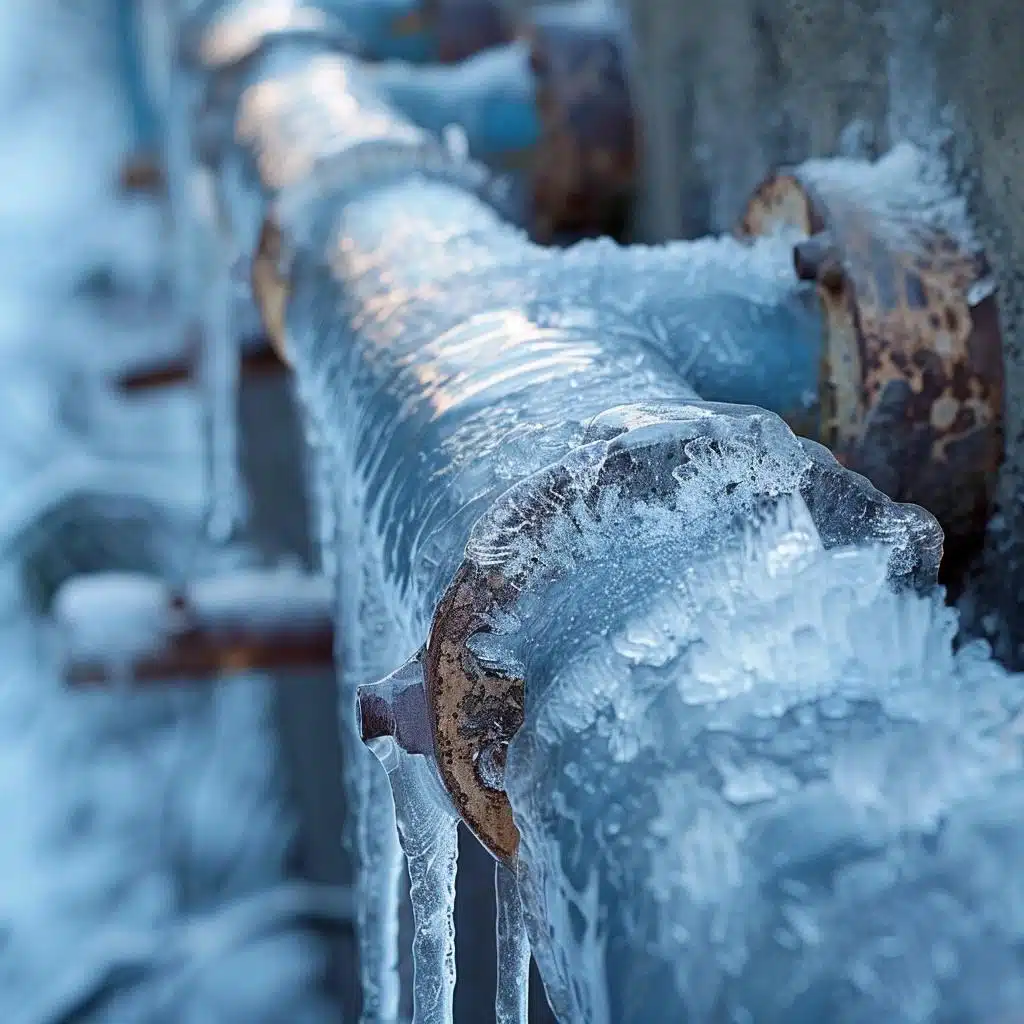We have discovered this great article relating to Helpful Tips to Prevent Frozen Pipes this Winter directly below on the internet and felt it made perfect sense to talk about it with you on this site.
.jpg)
Winter can damage your plumbing, particularly by freezing pipes. Here's how to stop it from taking place and what to do if it does.
Introduction
As temperature levels decline, the threat of icy pipelines rises, potentially resulting in costly repair services and water damage. Understanding exactly how to prevent icy pipelines is vital for homeowners in cool climates.
Avoidance Tips
Insulating at risk pipelines
Cover pipelines in insulation sleeves or make use of warm tape to safeguard them from freezing temperature levels. Concentrate on pipelines in unheated or external areas of the home.
Home heating methods
Keep interior spaces effectively heated, particularly locations with plumbing. Open cupboard doors to allow warm air to circulate around pipelines under sinks.
Just how to recognize icy pipelines
Look for lowered water flow from faucets, uncommon odors or sounds from pipes, and noticeable frost on subjected pipelines.
Long-Term Solutions
Architectural changes
Think about rerouting pipes away from exterior wall surfaces or unheated areas. Add extra insulation to attics, cellars, and crawl spaces.
Upgrading insulation
Purchase premium insulation for pipelines, attic rooms, and wall surfaces. Correct insulation aids preserve constant temperatures and lowers the risk of icy pipes.
Shielding Outdoor Plumbing
Garden pipes and outdoor faucets
Separate and drain garden pipes before winter. Install frost-proof faucets or cover exterior taps with insulated caps.
Comprehending Icy Pipelines
What triggers pipelines to freeze?
Pipelines ice up when exposed to temperature levels below 32 ° F (0 ° C) for extended durations. As water inside the pipelines ices up, it broadens, putting pressure on the pipe walls and potentially creating them to burst.
Dangers and problems
Frozen pipelines can bring about water system interruptions, property damages, and expensive repair services. Burst pipelines can flood homes and trigger considerable structural damage.
Indicators of Frozen Pipeline
Recognizing icy pipelines early can prevent them from bursting.
What to Do If Your Pipes Freeze
Immediate actions to take
If you suspect icy pipes, maintain faucets available to eliminate pressure as the ice melts. Use a hairdryer or towels taken in hot water to thaw pipelines slowly.
Final thought
Protecting against icy pipelines calls for proactive procedures and fast reactions. By recognizing the reasons, signs, and preventive measures, home owners can secure their plumbing during cold weather.
6 Proven Ways to Prevent Frozen Pipes and Protect Your Home
Disconnect and Drain Garden Hoses
Before winter arrives, start by disconnecting your garden hoses and draining any remaining water. Close the shut-off valves that supply outdoor hose bibs and leave the outdoor faucet open to allow any residual water to drain. For extra protection, consider using faucet covers throughout the colder months. It’s also important to drain water from any sprinkler supply lines following the manufacturer’s directions.
Insulate Exposed Pipes
Insulating your pipes is an effective way to prevent freezing. Pipe insulation is readily available at home improvement stores and is relatively inexpensive. Pay close attention to pipes in unheated areas such as the attic, basement, crawl spaces, or garage. Apply foam insulation generously to create a buffer against the cold. You can also wrap your pipes in heat tape or thermostat-controlled heat cables for added warmth.
Seal Air Leaks
Inspect your home for any cracks or openings that could let in cold air. Seal any holes around the piping in interior or exterior walls, as well as the sill plates where your home rests on its foundation. Additionally, make sure to keep your garage door closed unless you’re entering or exiting. Leaving it open creates a significant air leak that can lead to frozen pipes.
Allow Warm Air Circulation
During cold snaps, it’s essential to allow warm air to circulate evenly throughout your home. Leave interior doors ajar to promote better airflow. Open kitchen and bathroom cabinets to help distribute heat consistently around the rooms. If you have small children or pets, be sure to remove any household chemicals or potentially harmful cleaners from open cabinets for safety.
Let Faucets Drip
A small trickle of water can make a big difference in preventing ice formation inside your pipes. When temperatures drop significantly, start a drip of water from all faucets served by exposed pipes. This continuous flow helps prevent the water from freezing. Additionally, running a few faucets slightly can relieve pressure inside the pipes, reducing the chances of a rupture if the water inside does freeze.
https://choateshvac.com/6-proven-ways-to-prevent-frozen-pipes-and-protect-your-home/

Do you like reading up on How to Prevent Your Pipes From Freezing? Place feedback down below. We'd be glad to see your insights about this write up. In hopes that you come back again later on. If you please take the opportunity to share this write-up if you enjoyed reading it. Bless you for your time. Please stop by our website back soon.
Click Here